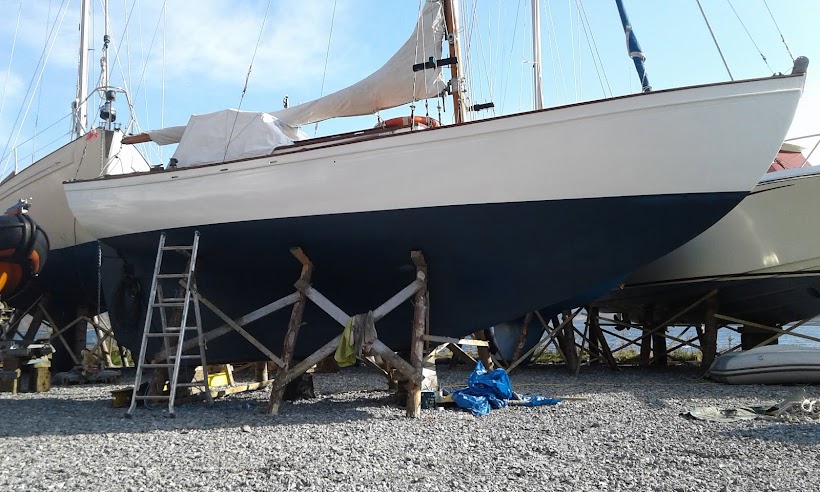How about dividing the midship mould in equal parts, and the bow and stern posts similarly, and apply some sort of rule to the stations aft of the stem and forward of the sternpost? Say, at stations 3 and 9? Maybe increase the widths of the planks gradually, until the last three in an eight-strake boat were more or less equal width?
Would that work?
 |
| Close, but the sheerstrake needs to be perhaps 1/4in narrower at the stern, to give it a little flip, which entails the second strake down being a bit wider, and so on down. |
But where is your eye? From a fish-eye view, or from just above the waterline? At waterline, or 6ft above? And if your sections are flared fore (or aft) then a 4in wide strake will look narrower than a 4in strake without flare. And what if the boat is a dinghy that habitually heels to 30 degrees or more? Then that sweet (suet as they used to say) line flattens and even reverses into what they call sny (a nasty word for a nasty look, although suet-looking in a coble).
It all goes to show that building in clinker without the benefit of drawings with plank lines marked, from a genius like Mr Oughtred, Vivier orGartside, is perhaps the hardest discipline. Carvel, you can get away with stealers and such to finish off a hull, and strip plank is no more than wood cored epoxy and a very very nasty way of building a (nice) boat. Slap them on, fair them off, sheathe them and you wouldn't know what the core looked like. With clinker the innermost soul of the boat builder is cruelly exposed.
So, the answer is to use and trust your eye, and batten each plank out before you spile. And agonise, and measure and measure again, and still you may not get it spot on.
I make no claims that I have cracked it in the skiff I am building. So far so good. Much will depend on that vital sheerstrake. And only then will I know if I have managed to pull off anything close to the perfectly lined out clinker boat. The closest so far has been the sjekte, Florence Oliver I built a while back.


No comments:
Post a Comment